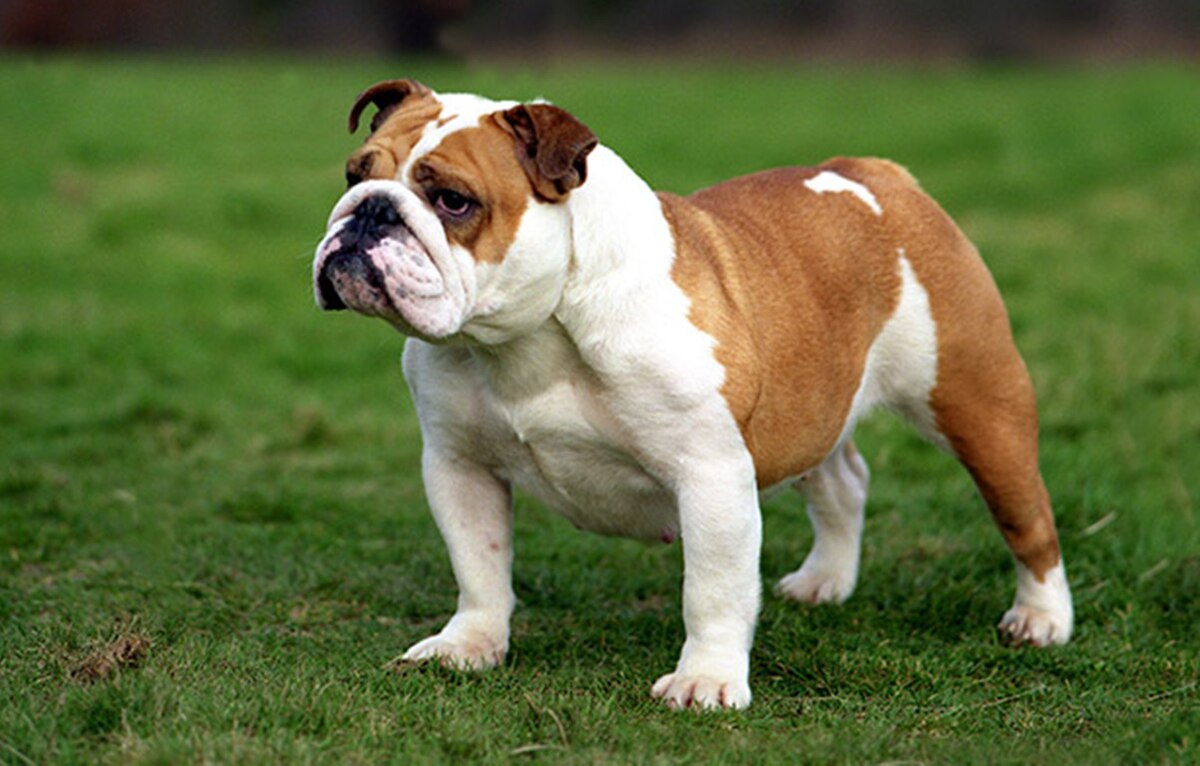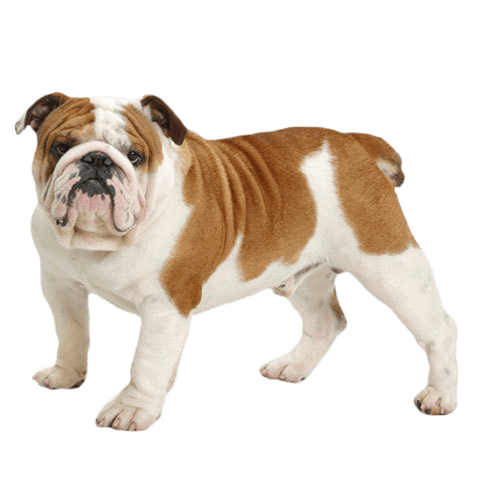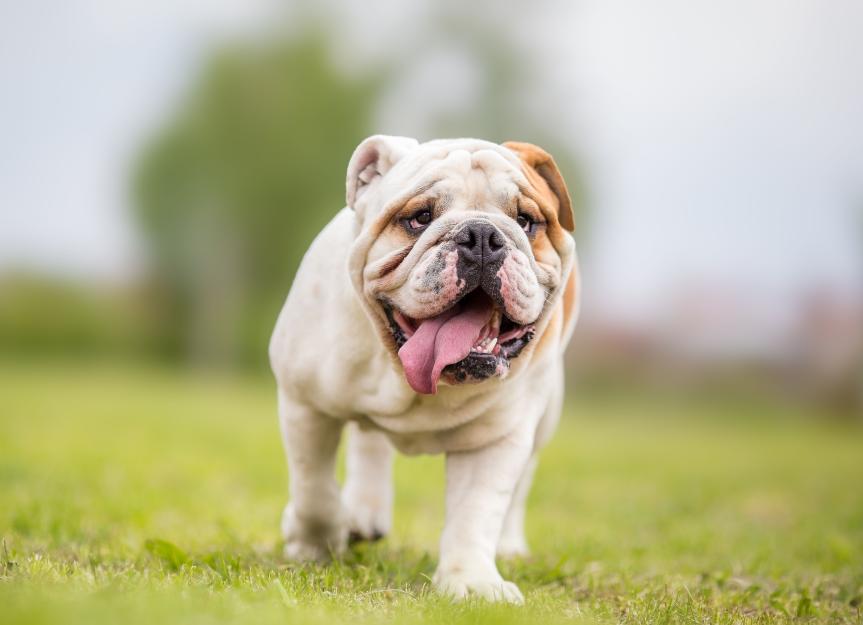The English Bulldog is a beloved and iconic dog breed. Known for their distinct appearance, these dogs have a loyal following.
English Bulldogs have a unique charm. With wrinkled faces and stocky bodies, they are easily recognizable. Their gentle and affectionate nature makes them great family pets. Despite their tough look, they are quite loving. These dogs are perfect for those seeking a loyal companion.
They adapt well to various living conditions, including apartments. English Bulldogs are also known for their courage and determination. They might be stubborn at times but are generally good-natured. If you are considering adding a new member to your family, the English Bulldog might be the perfect choice. Discover more about this wonderful breed in our detailed guide.
History And Origin
The English Bulldog is a beloved breed known for its distinctive appearance and gentle nature. Its history is rich, filled with fascinating events and transformations. Understanding the origin of this breed can deepen your appreciation for these loyal companions.
Ancient Roots
The English Bulldog's history dates back to ancient times. Early ancestors of the breed were used for bull-baiting, a popular sport in medieval England. These dogs needed to be strong, tenacious, and courageous. They were bred specifically for these qualities, resulting in the Bulldog's characteristic traits.
Historical records suggest that the Bulldog's ancestors were brought to Britain by Phoenician traders. Over time, these dogs were bred with native breeds, creating the early Bulldog. These early Bulldogs were larger and more athletic than the modern breed.
Development In England
The modern English Bulldog began to take shape in the 19th century. Bull-baiting was banned in 1835, leading to a decline in the breed's popularity. Breeders began to focus on creating a more docile and friendly dog. This shift in breeding goals led to the development of the Bulldog we know today.
The breed's appearance also changed significantly. Bulldogs became shorter, stockier, and developed their iconic wrinkled faces. Despite their fierce history, modern Bulldogs are known for their gentle and loving nature. They are now one of the most popular companion breeds in the world.

Credit: en.wikipedia.org
Physical Characteristics
The English Bulldog is a breed known for its unique physical characteristics. These dogs have a distinctive appearance that sets them apart. In this section, we will explore their size, weight, and other notable features.
Size And Weight
English Bulldogs are medium-sized dogs. Males typically weigh between 50-55 pounds. Females are slightly lighter, weighing around 40-50 pounds. Their height ranges from 12 to 16 inches at the shoulder. Despite their size, they have a robust build.
Distinctive Features
One of the most notable features is their wrinkled face. They have a broad, short muzzle. Their nose is pushed in, giving them a unique look. Bulldogs also have a pronounced underbite. This means their lower jaw extends past the upper jaw.
Their eyes are wide apart and dark. They have small, thin ears that fold back. Their body is muscular and sturdy. Their short, smooth coat comes in a variety of colors. Common colors include brindle, white, fawn, and red. They have a distinctive rolling gait due to their short, stocky legs.
Temperament
The English Bulldog is known for its gentle and loving nature. Its temperament makes it a popular choice for families. Let's explore the general disposition and interaction with children.
General Disposition
The English Bulldog is calm and friendly. It enjoys lounging around the house. The breed is loyal and protective of its family. Bulldogs are known for their patience and tolerance. They rarely show aggression. Their easygoing nature makes them great companions. Bulldogs are also very affectionate. They love cuddles and attention from their owners.
Interaction With Children
English Bulldogs are great with children. They are gentle and patient. Bulldogs can tolerate rough play. They rarely lose their temper. Kids enjoy playing with them. Bulldogs' sturdy build makes them less prone to injury. Their calm nature helps create a peaceful home environment. Families with kids often choose Bulldogs for their temperament. They are reliable and loving pets.
Health Concerns
English Bulldogs are charming and loyal pets. But, they come with specific health concerns due to their unique body structure. Understanding these health issues can help owners provide better care for their beloved bulldogs.
Common Health Issues
English Bulldogs often face several health problems. Their short noses cause breathing issues. They have a condition called brachycephalic syndrome. This makes it hard for them to breathe, especially in hot weather.
They are also prone to skin infections. Their wrinkles can trap moisture and dirt. Regular cleaning of these wrinkles is necessary to prevent infections.
Another common issue is hip dysplasia. This occurs when the hip joint does not fit correctly. It can cause pain and mobility problems.
Bulldogs can also suffer from eye problems. They might have cherry eye, dry eye, or entropion. Regular vet visits can help detect these issues early.
Preventive Care
Preventive care is crucial for English Bulldogs. It can help mitigate many health problems.
First, maintain a healthy weight. Bulldogs are prone to obesity. Provide a balanced diet and regular exercise. This can prevent weight-related issues.
Second, keep their skin clean. Use a damp cloth to clean their wrinkles. This helps prevent skin infections.
Third, ensure they have regular vet check-ups. This helps detect and treat health issues early. Vaccinations and parasite control are also vital.
Fourth, monitor their breathing. Avoid overexertion and keep them cool in hot weather. This helps manage their breathing problems.
Lastly, provide dental care. Brush their teeth regularly to prevent dental issues.
Health Issue | Preventive Measure |
|---|---|
Breathing Problems | Keep them cool, avoid overexertion |
Skin Infections | Clean wrinkles regularly |
Hip Dysplasia | Maintain a healthy weight |
Eye Problems | Regular vet check-ups |
Obesity | Balanced diet and regular exercise |
By understanding these health concerns and taking preventive measures, owners can ensure their English Bulldogs live healthy and happy lives.
Diet And Nutrition
English Bulldogs have specific dietary needs to stay healthy and happy. Understanding their diet and nutrition requirements is crucial for their well-being. This section covers the essentials of a balanced diet and the ideal feeding schedule for your English Bulldog.
Balanced Diet
A balanced diet for an English Bulldog should include high-quality proteins. Chicken, beef, and fish are excellent sources. Carbohydrates are also important. Brown rice, sweet potatoes, and oats provide necessary energy. Bulldogs need healthy fats for their skin and coat. Omega-3 and Omega-6 fatty acids are beneficial. Vegetables and fruits add essential vitamins and minerals. Carrots, spinach, and apples are good choices. Always provide fresh water for hydration.
Feeding Schedule
Establishing a regular feeding schedule is important. Puppies need to eat more frequently. Feed them three to four times a day. Adults can eat two meals a day. Keep meal times consistent. This helps their digestion and metabolism. Avoid feeding them right before exercise. This can cause stomach issues. Measure their food portions to prevent overeating. Obesity is common in Bulldogs. Regular feeding routines promote a healthy weight.
Exercise Needs
English Bulldogs are known for their gentle and affectionate nature. But they also have specific exercise needs. Regular physical activity helps maintain their health and well-being. Understanding these needs can ensure a happy and healthy Bulldog.
Daily Activities
English Bulldogs enjoy short, daily walks. These walks should last about 20-30 minutes. Avoid walking them in extreme heat. Bulldogs can overheat quickly. They also like to play indoors. Simple games like fetch or tug-of-war are great. Always monitor their energy levels. Bulldogs can tire easily.
Suitable Exercises
Low-impact exercises are best for Bulldogs. Swimming can be a good option. It keeps them cool and active. Always supervise them in water. Short bursts of play in a fenced yard are ideal. Avoid strenuous activities. Bulldogs have a flat face, making it hard to breathe during intense exercise. Regular, gentle activities are key to their fitness.
Grooming Tips
English Bulldogs are a unique breed with specific grooming needs. Regular grooming ensures their health and happiness. Read on for some essential tips to keep your Bulldog looking and feeling great.
Coat Care
The coat of an English Bulldog is short and smooth. It requires regular brushing to remove loose hair and dirt. Use a soft-bristle brush or a rubber grooming mitt. Brush your Bulldog at least once a week. This helps to distribute natural oils and maintain a healthy coat.
Bathing your Bulldog should be done monthly. Use a mild dog shampoo to avoid skin irritation. Rinse thoroughly to remove all soap residues. Dry your Bulldog with a towel or a low-heat hairdryer. Pay special attention to skin folds to prevent moisture build-up, which can lead to infections.
Nail And Teeth Maintenance
Keeping your Bulldog's nails trimmed is essential. Overgrown nails can cause pain and lead to walking problems. Check their nails every two weeks and trim them when necessary. Use a pet nail clipper and cut the nails carefully, avoiding the quick.
Dental care is equally important. Brush your Bulldog's teeth at least three times a week. Use a dog-specific toothbrush and toothpaste. This helps to prevent plaque buildup and bad breath. Regular dental chews can also help maintain good oral hygiene.

Credit: www.petplan.co.uk
Training And Socialization
Training and socialization are crucial for your English Bulldog's development. Proper training ensures a well-behaved pet, while socialization helps them feel comfortable around others. Both aspects contribute to a happy and well-adjusted Bulldog.
Basic Commands
Start with simple commands like "sit," "stay," and "come." Use treats and praise to reward your Bulldog. Consistency is key. Practice these commands daily. Short, frequent sessions work best. Bulldogs can be stubborn, so patience is essential.
Socializing With Other Pets
Introduce your Bulldog to other pets gradually. Start with controlled, supervised meetings. Observe their behavior closely. Positive interactions build confidence. Reward your Bulldog for calm behavior. Socializing early helps prevent aggression.
Take your Bulldog to pet-friendly places. Parks, pet stores, and friends' homes are good options. Exposure to different environments is beneficial. Ensure all interactions are safe and positive. This helps your Bulldog become well-rounded.
Living Environment
Understanding the living environment for an English Bulldog is crucial for their well-being. These dogs have specific needs that ensure they remain healthy and happy in their home. Let's explore the ideal home setup and how to manage space for these lovable pets.
Ideal Home Setup
English Bulldogs thrive in a calm and comfortable home. They prefer a moderate temperature. Avoid extreme heat or cold. A cozy bed in a quiet corner is perfect. Provide access to fresh water at all times. Ensure your home is free from sharp objects. Bulldogs are prone to injuries due to their low activity levels.
Avoid stairs if possible. Bulldogs have joint issues. Ensure their food and water bowls are at an accessible height. This helps prevent strain on their neck and back. A small, secure yard is ideal. It allows them to play without overexerting themselves. Regular, short walks are better than long, strenuous ones.
Managing Space
Bulldogs do not need a lot of space. Small apartments can work well. Ensure there is room for them to move around freely. Minimize clutter to prevent accidents. Bulldog-proof your home. Secure loose cables and remove small objects they might chew on.
Set up a specific area for their belongings. Keep their toys, bed, and food in one spot. This helps them feel secure. Create a cool area for hot days. Bulldogs can overheat easily. A fan or air conditioner is beneficial. Consider baby gates to restrict access to certain areas. This helps manage their space effectively.

Credit: www.petmd.com
Frequently Asked Questions
What Is The Lifespan Of An English Bulldog?
English Bulldogs typically live between 8 to 10 years. Proper care, regular vet visits, and a healthy diet can extend their lifespan.
How Much Exercise Do English Bulldogs Need?
English Bulldogs need moderate exercise, around 20-30 minutes daily. Short walks and playtime are ideal for keeping them healthy and happy.
Are English Bulldogs Good With Children?
Yes, English Bulldogs are gentle and friendly with children. They are known for their patience and affectionate nature, making them great family pets.
Do English Bulldogs Have Breathing Problems?
Yes, English Bulldogs are prone to breathing issues. Their short snouts can cause respiratory problems, so it's important to monitor their breathing and avoid overexertion.
Conclusion
The English Bulldog is a loyal and loving companion. Their gentle nature makes them great for families. They are also known for their patience with children. Bulldogs require moderate exercise and regular vet visits. Their unique appearance and friendly personality make them stand out.
Adopting one can bring joy and warmth to any home. Remember to provide proper care and love. Your English Bulldog will surely become a cherished family member. Consider this breed for a loyal and affectionate pet. They truly are a delight to have around.
